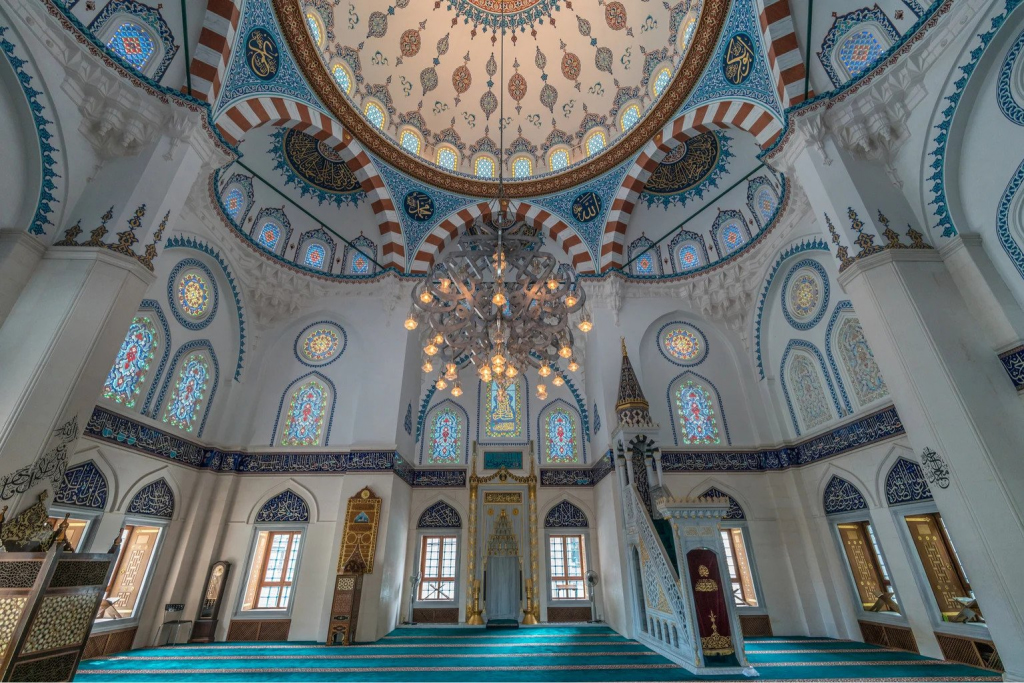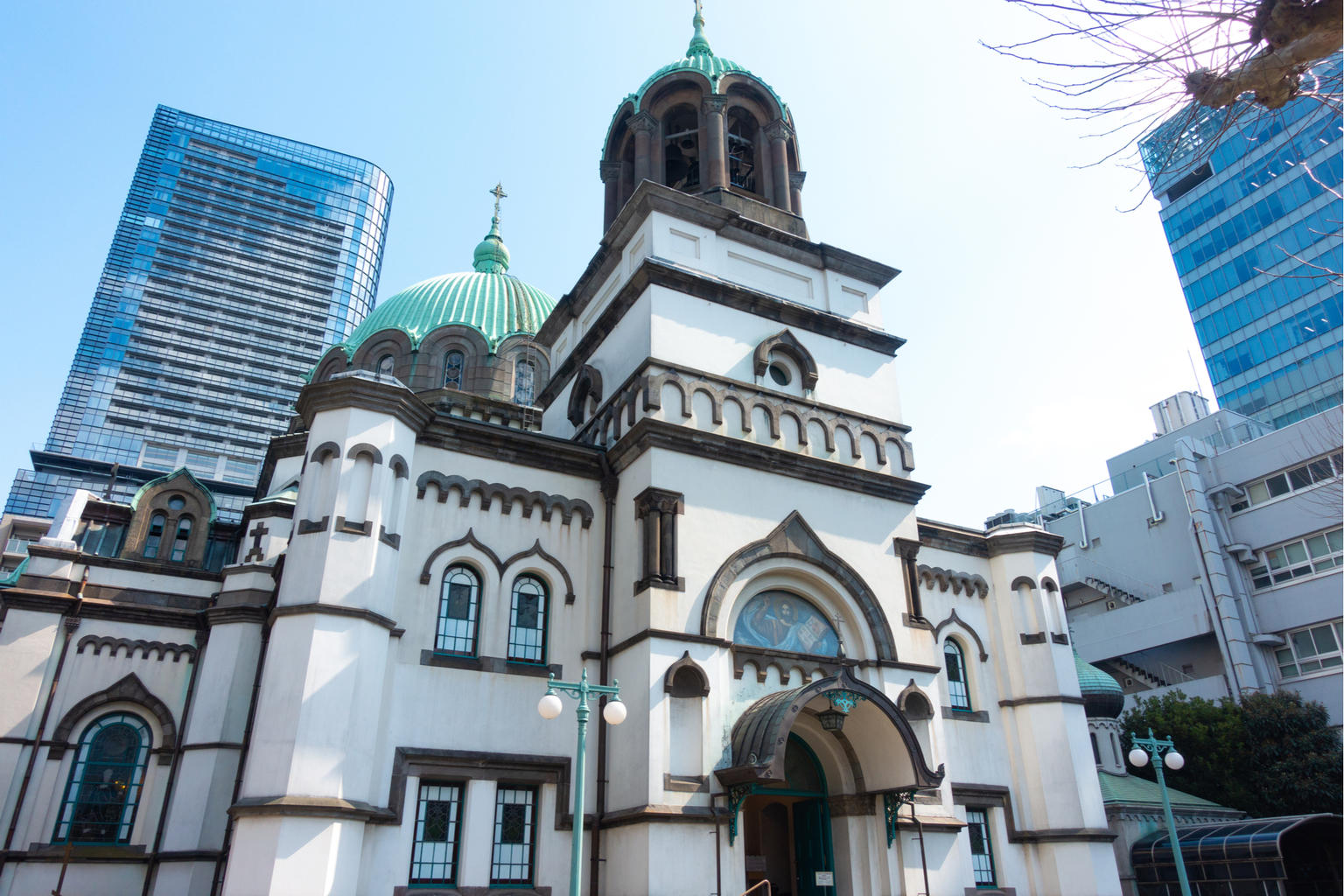A visit to the most prominent shrines and temples of Tokyo, from Meiji to Sensoji, is high on the agenda of most who arrive in the city for the first time. They are seldom disappointed. Yet the exotic invariably becomes the routine after one settles into the daily grind of life. Religious minorities, who contribute to Japanese society while retaining their unique cultural heritage, have forged their own sanctuaries in Japan. Whether it’s a pilgrimage or a culture tour, these temples of minority religions in Tokyo are worth a visit.
As these are places of immense importance to their respective congregations, please remember to conduct yourself in as unobtrusive a manner as possible.
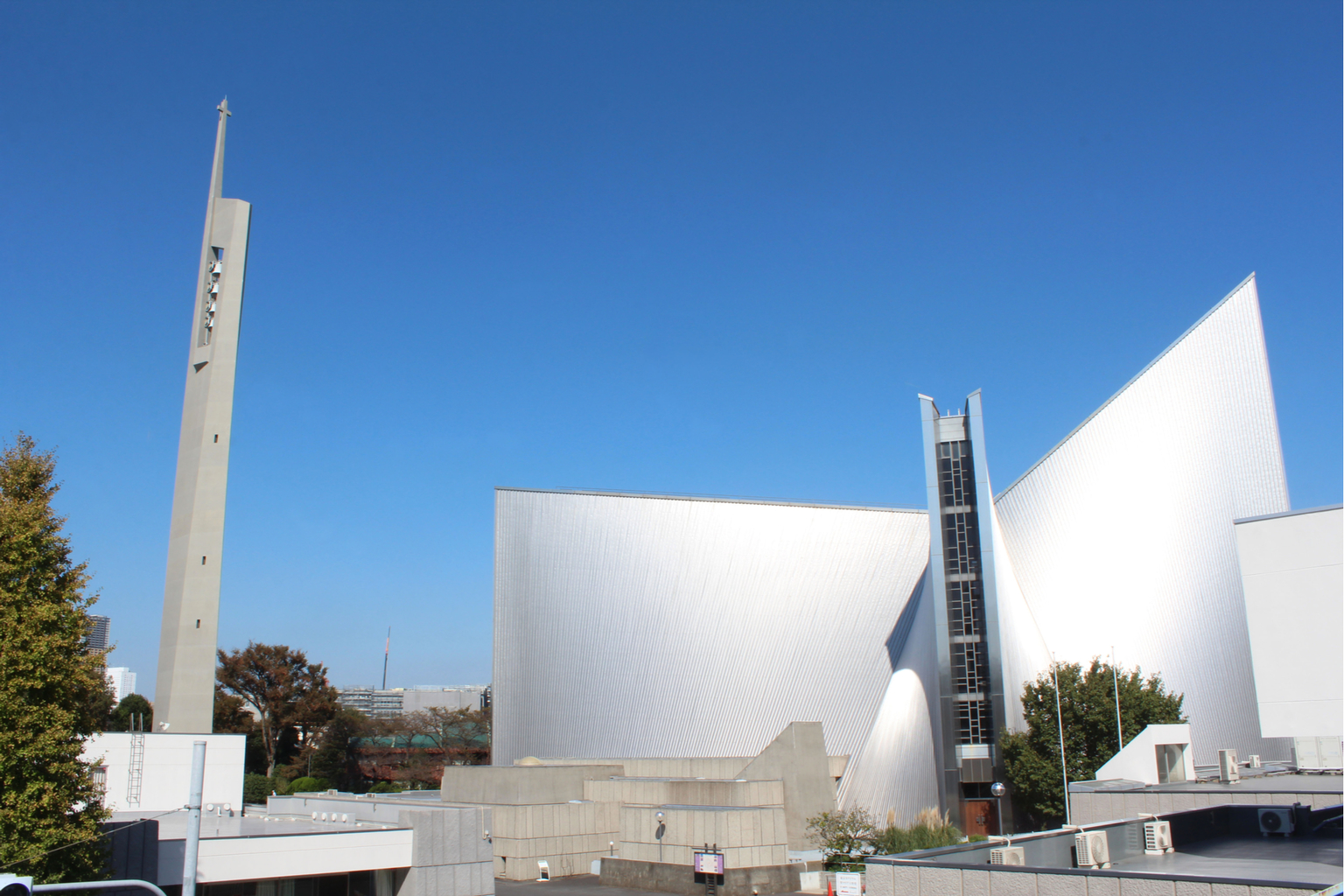
Photo by ranmaru, via Shutterstock
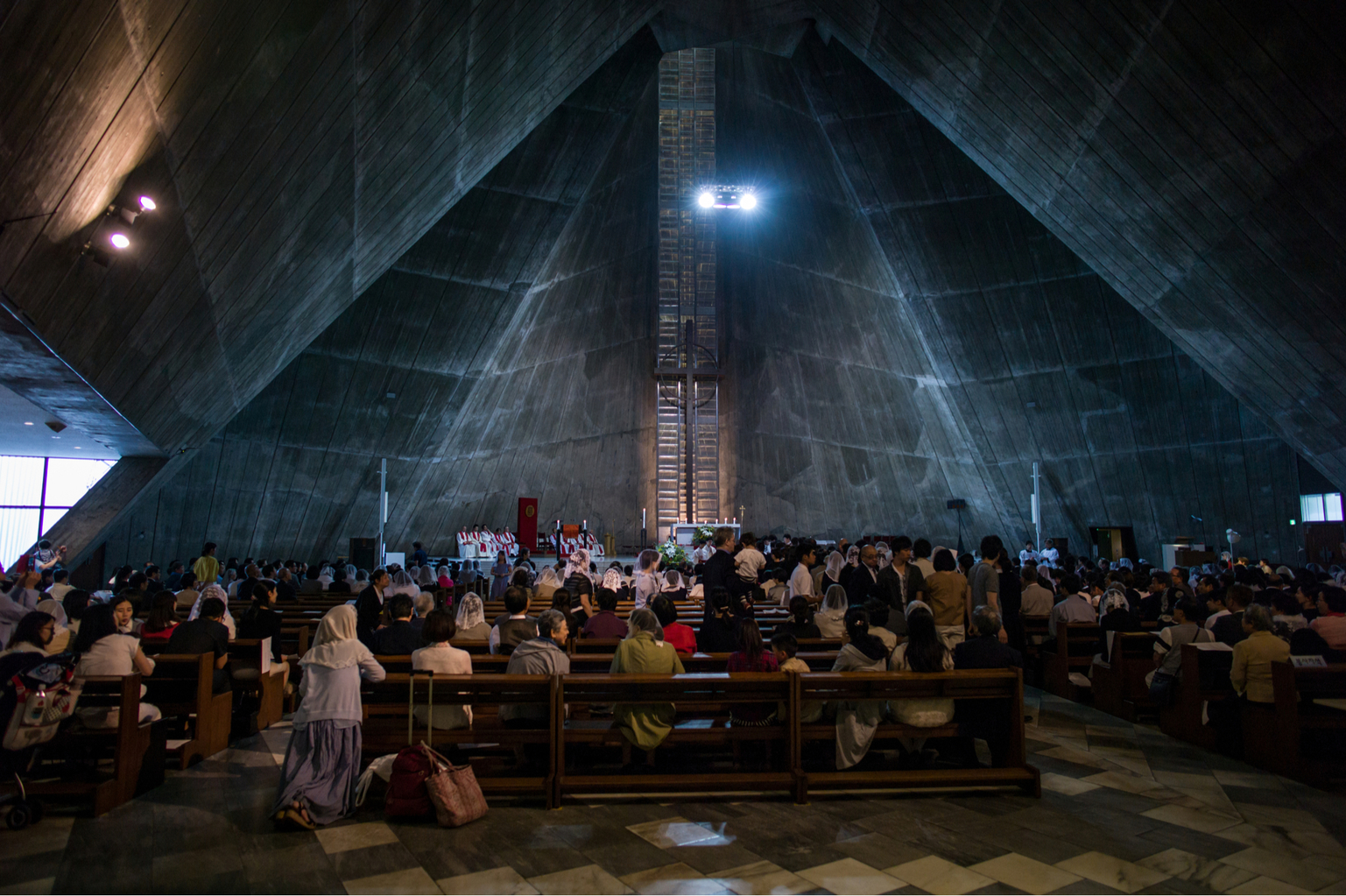
Photo by gary yim, via Shutterstock
1. St. Mary’s Cathedral
Kenzo Tange was one of the most eminent Japanese architects of the 20th century. Known for his fusion of modernism and Japanese tradition, his legacy can be seen everywhere from the Hiroshima Peace Memorial Park to the Tokyo Metropolitan Government Building. St. Mary’s Cathedral was his most personal project and ultimately the site of his funeral.
The original wooden building was eradicated by the cataclysmic firebombing raids in the final year of the Second World War. Its replacement, a truly striking structure both inside and out, was inaugurated in 1964 as the seat of the Roman Catholic Archdiocese of Tokyo.
A bell tower standing in excess of 60 meters looms over a steel-clad exterior where eight curved walls form one giant cross. The imposing stone-tiled interior likewise leaves a lasting impression. Finally, the church grounds feature a miniaturized recreation of the famous Grotto of Lourdes in France.
2. Holy Resurrection Cathedral
Holy Resurrection Cathedral, the heart of the Japanese Orthodox Christian Church, can be found in Ochanomizu. It was designed by Englishman Josiah Conder, an advisor to the Meiji government who exerted enormous influence on the development of Western architecture in Japan. Severe damage was wrought by the Great Kanto Earthquake of 1923, including the collapse of the belfry. It necessitated extensive repairs and renovations that took six years to complete. This is the incarnation that survives today. True to its Byzantine style, the cathedral has a dome and beautiful frescoes inside.
Informally known as Nikorai-do, it takes its affectionate moniker from Nicholas of Japan, a Russian-born priest. He first ventured to the port city of Hakodate in the waning years of the Tokugawa Shogunate to spread his faith. Becoming familiar with the language and cultural intricacies of his adopted homeland, Nicholas resided in the country until his death in 1912. His zeal and determination culminated in the construction of this Byzantine-inspired place of worship in 1891.
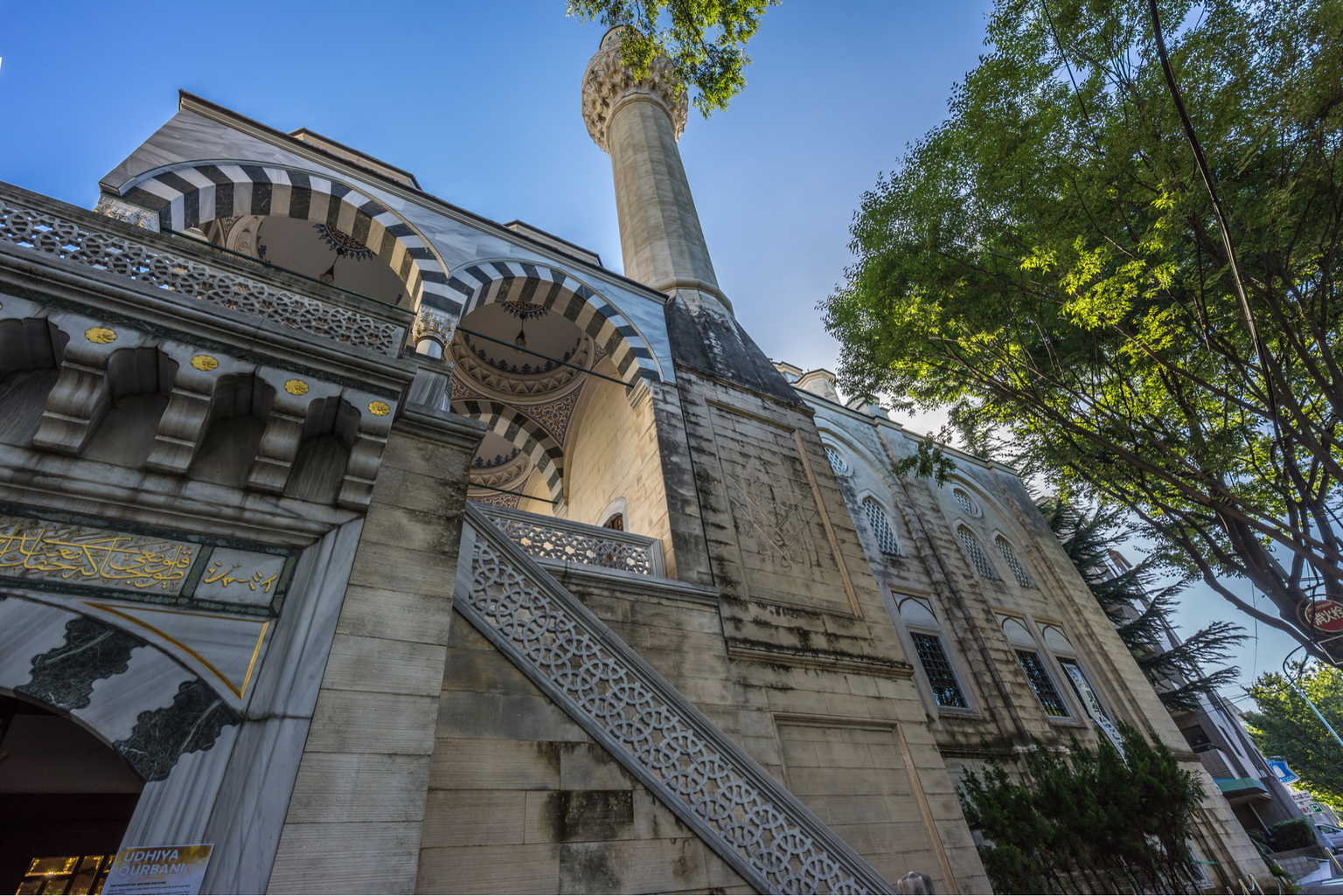
Photo by Manuel Ascanio, via Shutterstock
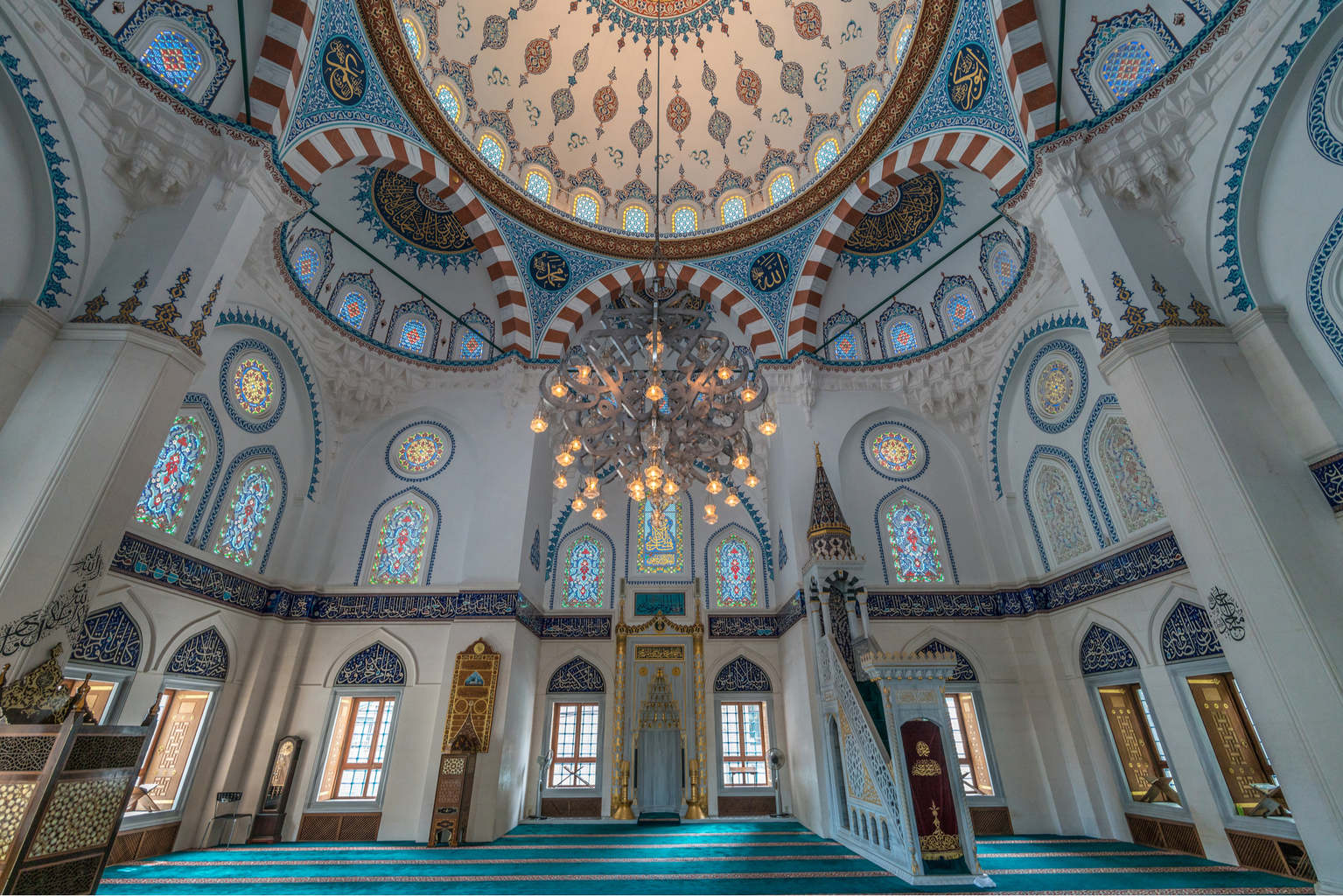
Photo by Manuel Ascanio, via Shutterstock
3. Tokyo Camii
Japan’s largest mosque serves all Muslims from around the world. However, Tokyo Camii is intrinsically linked with the nation’s Turkish community. Founded by ethnic Turkic immigrants who sought refuge from the USSR, it opened its doors to the fledgling displaced populace in 1938. Gradual structural deterioration culminated in the demolition of the original building in 1986, but a substantial influx of Turkish money and manpower ensured an impressive replacement was in place at the turn of the century.
The Tokyo Mosque in Yoyogi Uehara today evokes the unmistakable Ottoman style. Large quantities of marble were imported from Anatolia to be crafted into exquisite patterns. Their geometrical precision combines mathematical expertise with artistic triumph. An adjacent cafe and bustling Halal Market are also open for perusal to all visitors, as is a Turkish cultural center on the first floor. Guided tours in Japanese are offered if you wish to intimately observe worship every Saturday, Sunday and public holidays from 2:30pm. (Reservations are not required for this experience.)
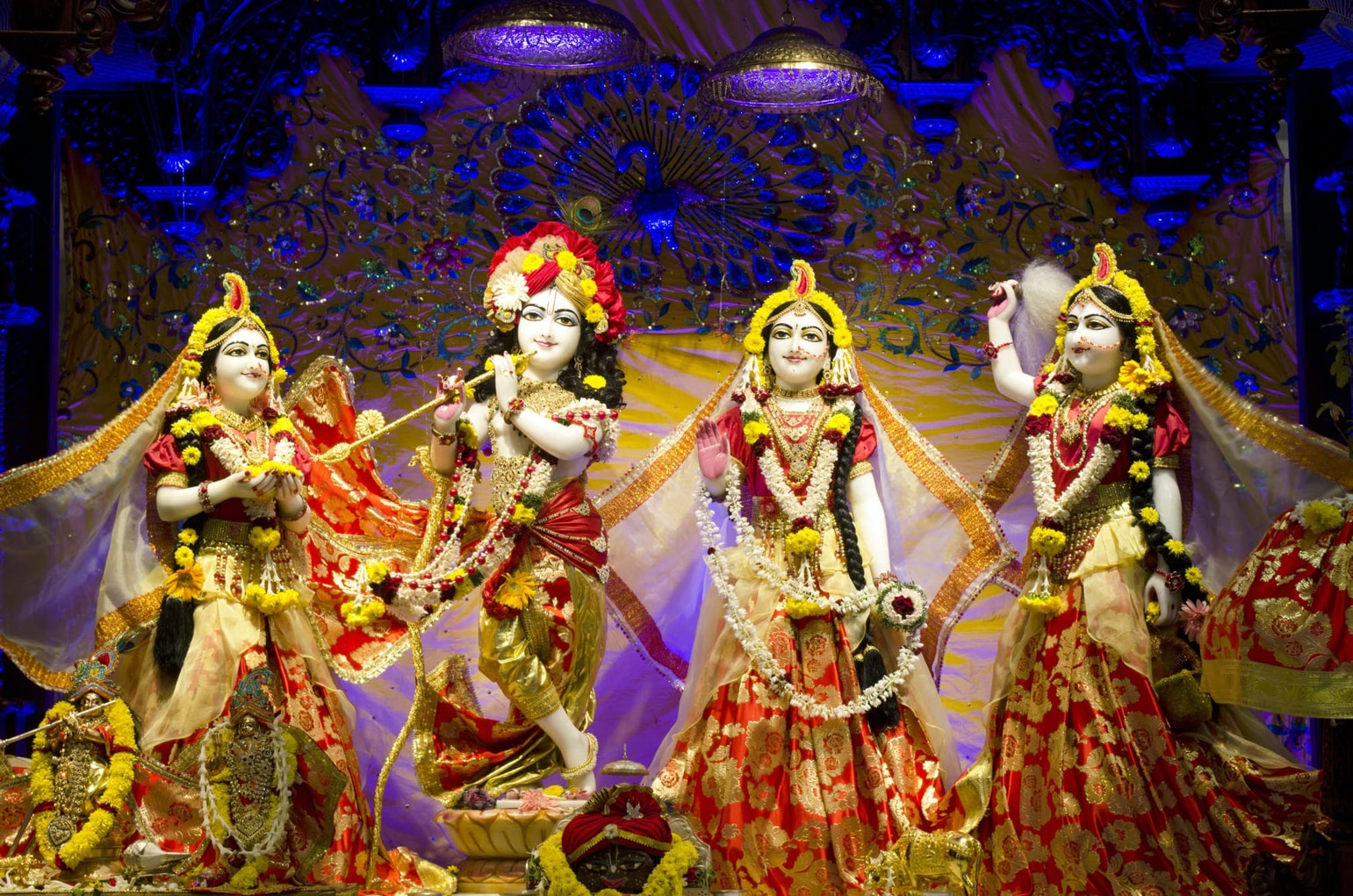
Iskcon Temple, photo by Vikrant Sardana
4. ISKCON Japan
Edogawa has built a well-deserved reputation for itself as Tokyo’s “Little India” over the years. Restaurants specializing in the cuisine of the Indian subcontinent are strewn across the neighborhood. Grocery stores stock the most sweat-inducing spices imaginable.
Spiritual nourishment is concentrated at a temple dedicated to what has been termed “Krishna Consciousness.” Even if your comprehension of what exactly this entails does not extend beyond the George Harrison song, here one can experience a living polytheism that evokes the senses. Statues of syncretic deities beckon you through a kaleidoscope of colors amidst the soul-stirring sound of “The Great Mantra.” Govinda’s, a vegetarian eatery situated on the premises, is held in high regard by devotees and travelers alike.
For more stunning architecture check out these articles:
5 Most Beautiful Museums in Japan Designed by Famous Architects
Tokyo Architecture: 5 Famous Japanese Architects’ Buildings to Visit
Updated On February 14, 2023

